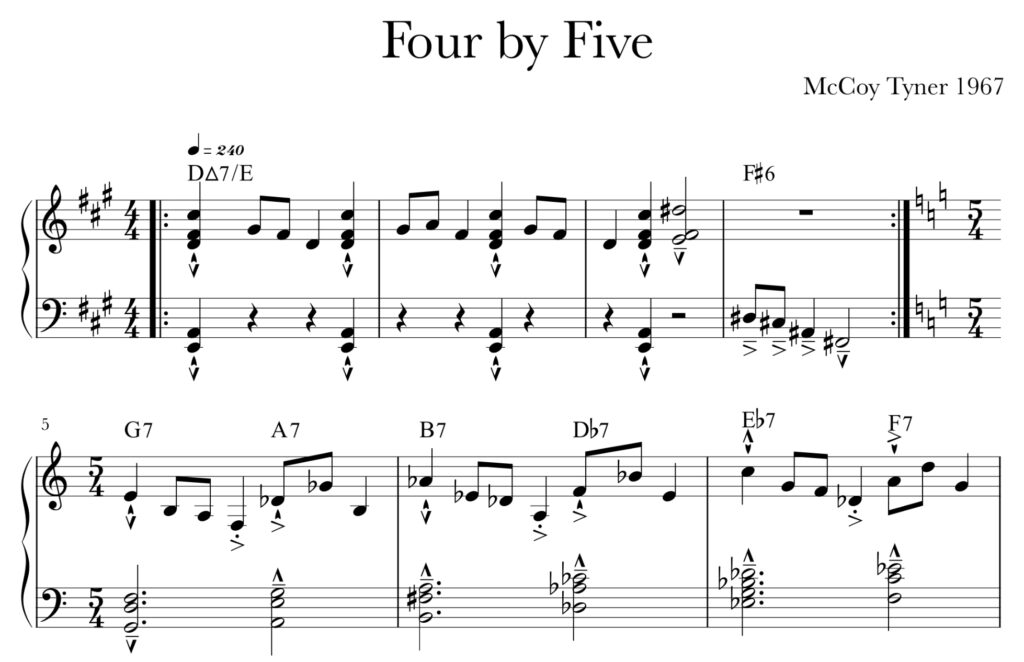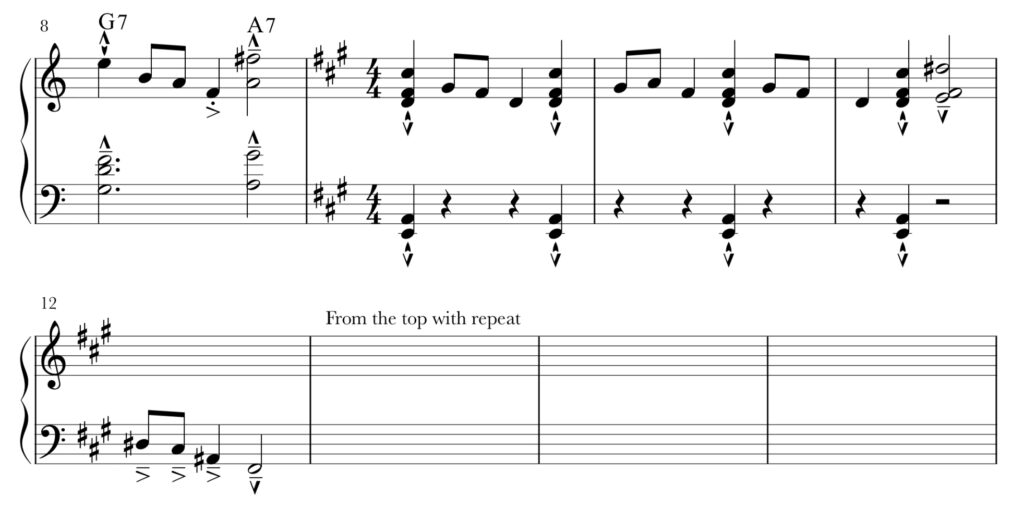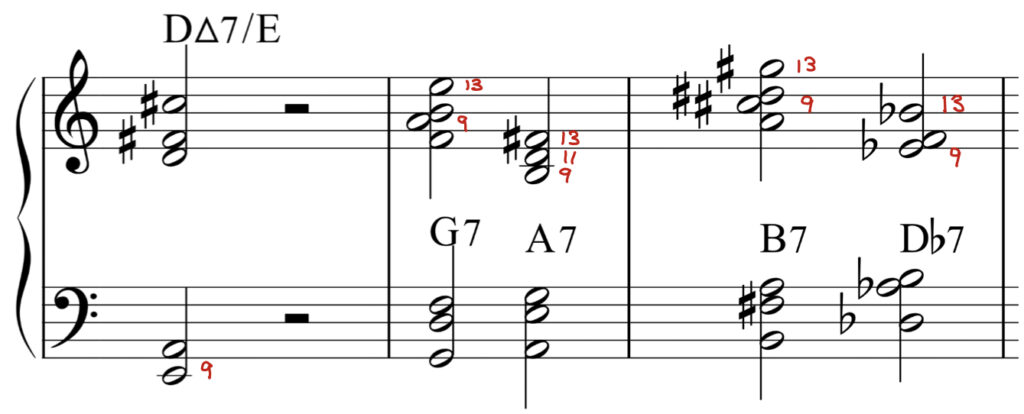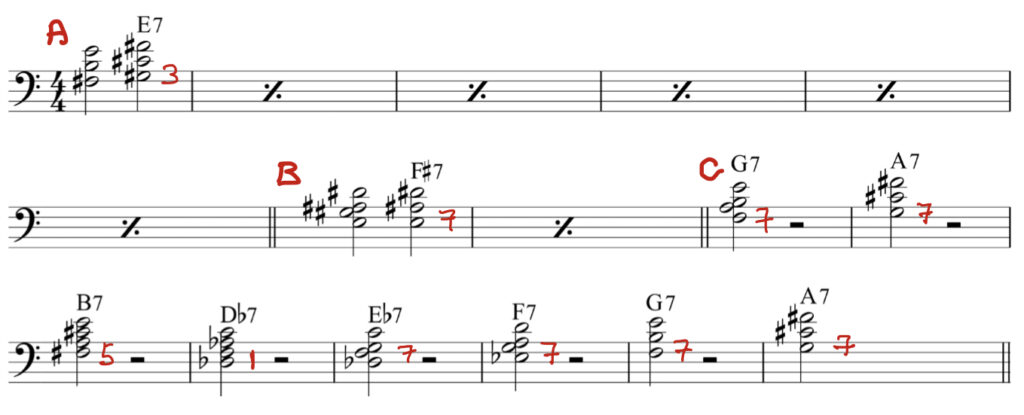McCoy Tyner - 1967
‘Four by Five’ is from McCoy Tyner’s essential 1967 album “The Real McCoy”. Tyner was always a versatile player but this album finds him drawing inspiration from his five year collaboration with John Coltrane between 1960 and 1965.


First off, the head has two parts – four bars in 4/4 and four bars in 5/4 – A, A, B, A, A, A, B, A. (32 bars).
The head relies entirely on diatonic, unaltered extensions (9, 11, 13). The ‘A’ section uses what might be called a “Naima” chord (Limk). The chord is a Major seven with the 9th in the bass. McCoy also uses the signature 4ths on the bottom of the chord (Example 1).
The ‘B’ section uses more traditional voicings with the 9 and 13 on top.

Notice that the horns in the ‘B’ section play the chord sequence. The sequence runs up a whole tone scale – f, g, a, b, d flat, e flat.
The structure of the solo sections is flexible. There are three basic sections – A, B, and C in Example 2.
Sections ‘A’ and ‘B’ reflect the first section of the head. Support players need to listen carefully as the soloist is free to extend or repeat each section at will. That is, the ‘A’ section can be 6 bars long or extended to 8 or 12, as can the ‘B’ section. The 5/4 section is abandoned; sticking to 4/4 in section ‘C’. This form flexibility keeps things fresh and spontaneous.
‘The chord voicings in Example 2 are examples of what Tyner plays under his own solo. Typically they are 4th chords built on the 3rd or 7th of the chord.

